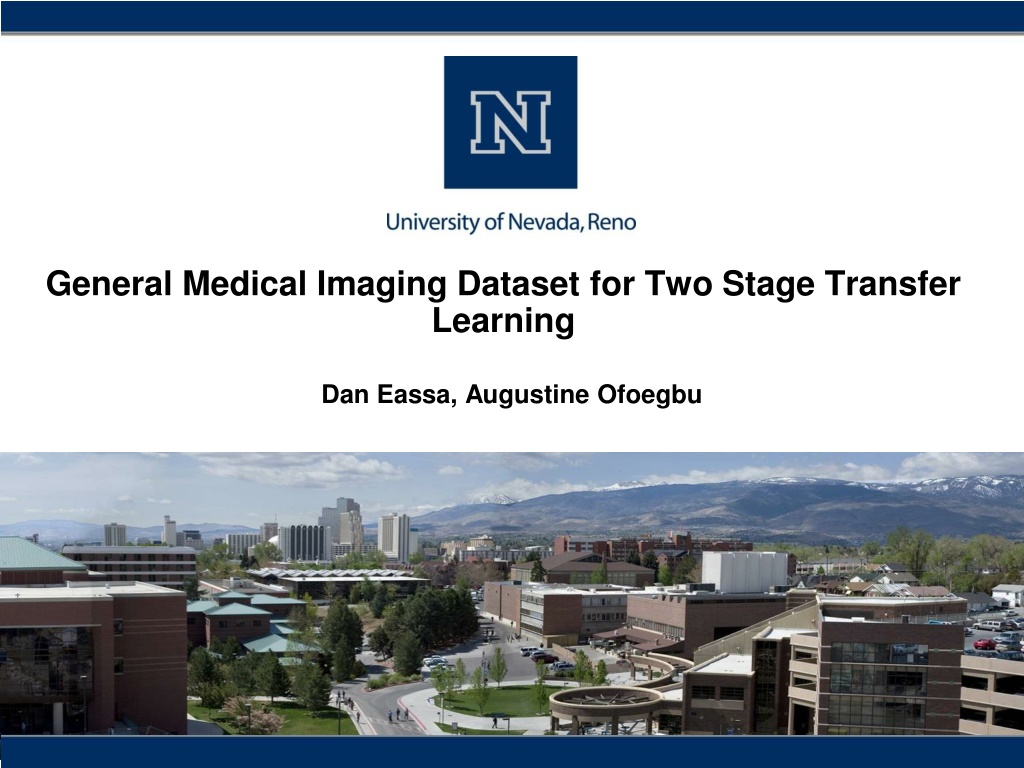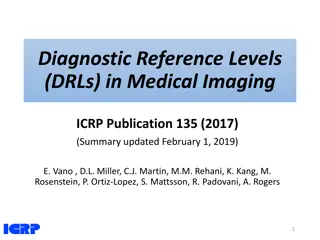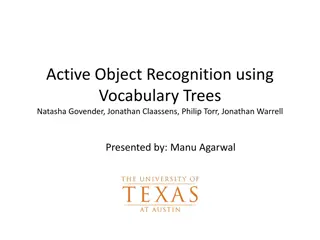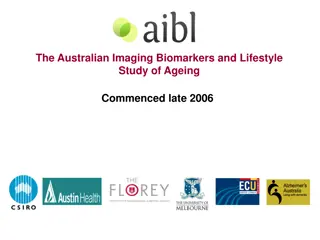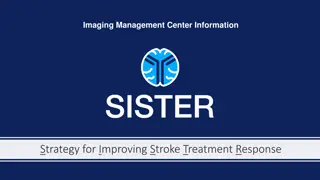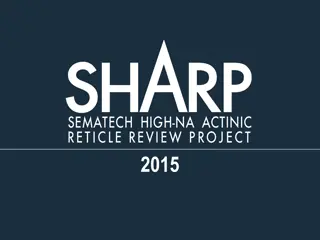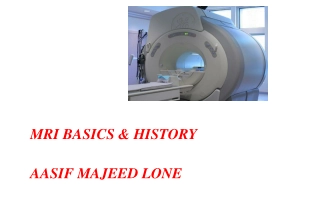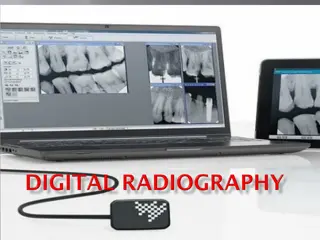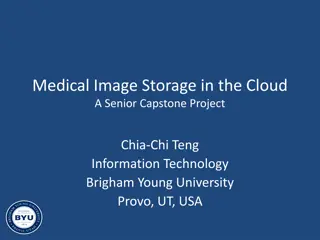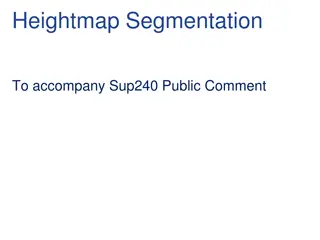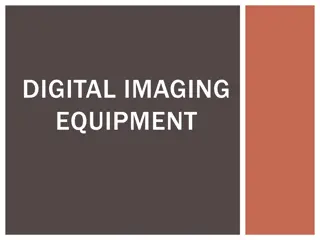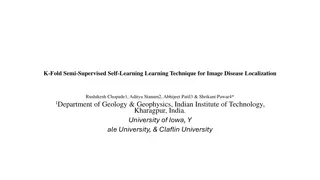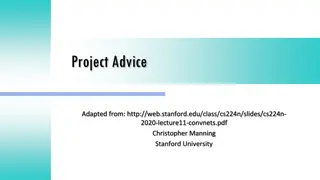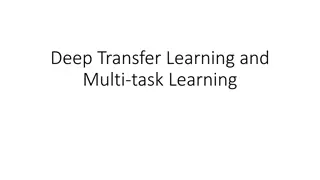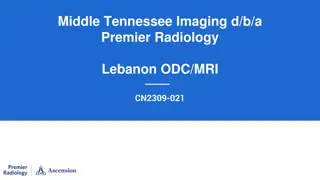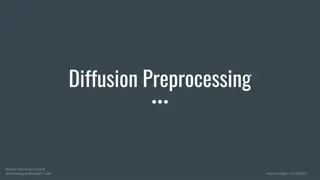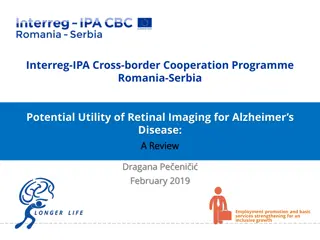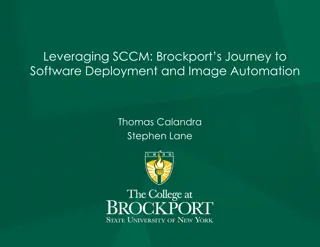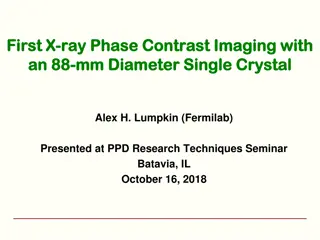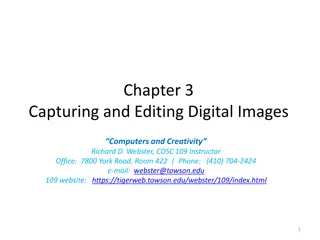General Medical Imaging Dataset for Two-Stage Transfer Learning
This project aims to provide a comprehensive medical imaging dataset for two-stage transfer learning, facilitating the evaluation of architectures utilizing this approach. Transfer learning in medical imaging involves adapting pre-trained deep learning models for specific diagnostic tasks, enhancing model development speed, reducing the necessity for extensive labeled datasets, and enhancing image analysis accuracy. Challenges include limited medical data, domain adaptation, model interpretability, and regulatory approval. The project focuses on improving domain adaptation by incorporating multiple pre-training stages, such as ImageNet pretraining followed by mammogram analysis training.
Download Presentation

Please find below an Image/Link to download the presentation.
The content on the website is provided AS IS for your information and personal use only. It may not be sold, licensed, or shared on other websites without obtaining consent from the author. Download presentation by click this link. If you encounter any issues during the download, it is possible that the publisher has removed the file from their server.
E N D
Presentation Transcript
General Medical Imaging Dataset for Two Stage Transfer Learning Dan Eassa, Augustine Ofoegbu
Outline Project Goals Introduction Prior Works Datasets/Code Experiments Project Plan 2
Goals of this project 1. Provide a general medical imaging dataset that can be used for a variety of tasks in the medical domain. 1. Use this dataset to evaluate the performance of architectures using a two stage transfer learning approach. 3
Introduction Transfer learning in medical imaging involves adapting pre-trained deep learning models for specific medical diagnostic tasks. This approach accelerates model development, reduces the need for extensive labeled datasets, and improves the accuracy of image analysis. Challenges include limited medical data, domain adaptation, model interpretability, and regulatory approval. 4
Introduction Can domain adaptation be improved by incorporating multiple pre-training stages? General Transfer Learning approach Stage 1: ImageNet Pretraining Stage 2: Mammogram Analysis Train model on ImageNet Unfreeze layers, train on general medical images Unfreeze layers, train for task 5
Prior Works Prior work has shown that pre-training can improve model performance or improve time to convergence Similar two stage transfer learning approaches have been done Using a similar image domain Fine tune on chest images, test on mammogram images Using a larger dataset Pre-train large mammogram dataset, fine-tune on specific mammogram dataset Using different imaging techniques Pre-train on microscopic images, fine-tune on mammogram dataset 6
Datasets Pretraining Stage 1: ImageNet Dataset Pretraining Stage 2: Aggregated Medical dataset created by us Considerations for including datasets in final aggregated dataset Diversity of body parts and imaging modalities Balance of categories Quality of images Augmentations may be used to improve balance of final dataset 7
Datasets Fine tune, train and test - INBreast, CBIS-DDSM (classification), BCSS (segmentation) Training: 8
Experiment Architectures Primary architecture for evaluation is Swin-T Other architectures to be explored as time permits ResNet - Classification UNet - Segmentation Swin UNETR - Segmentation 9
Experiment Tools Preprocessing Normalize images to 3 channels Normalize image size CLAHE Masking of artifacts Data augmentation Resizing Cropping Flipping Rotating Translating Stretching/Squeezing Image filtering 10
Experiment Tools PyTorch used for experiments Swin Transformer and ResNet have pre-trained ImageNet1k models in PyTorch Code available for all architectures considered 11
Experiment Design Pretraining Stage 1 Dataset Pretraining Stage 2 Dataset Experiment Number Fine Tuning Task Fine Tuning Dataset Test Dataset INBreast, CBIS- DDSM INBreast, CBIS- DDSM 1 ImageNet 1k Med Images Classification 2 ImageNet 1k Med Images Segmentation BCSS BCSS INBreast, CBIS- DDSM INBreast, CBIS- DDSM 3 ImageNet 1k None Classification 4 ImageNet 1k None Segmentation BCSS BCSS INBreast, CBIS- DDSM INBreast, CBIS- DDSM 5 None Med Images Classification 6 None Med Images Segmentation BCSS BCSS INBreast, CBIS- DDSM INBreast, CBIS- DDSM 7 None None Classification 8 None None Segmentation BCSS BCSS *Pretraining stage 2 is classification task 12
Experiment - Other Considerations Other considerations are which layers to unfreeze for Pre-training Stage 2 and Fine Tuning Stage 13
Experiment Evaluation Evaluation of performance will report metrics: AUC (TPR vs FPR) F1 score Accuracy Precision Recall RMSE Confusion Matrix (True vs Predicted label) 14
Project Plan S/N Task ECD 1 Topic Identification 10/16 2 Dataset Collection 10/23 3 Data Preprocessing 10/30 Model 4 10/30 Implementation 5 Interim Report 11/8 6 Model Training 11/20 Experiments and Evaluations 7 12/4 8 Final Report 12/22 15
References Convolutional Neural Networks for Medical Image Analysis: Full Training or Fine Tuning? https://ieeexplore.ieee.org/document/7426826 Deep Learning Pre-training Strategy for Mammogram Image Classification: an Evaluation Study https://www.ncbi.nlm.nih.gov/pmc/articles/PMC7573033/#:~:text=This%20study%20suggests%20that%20pre, malignant%20and%20benign%20screening%20patients Double-Shot Transfer Learning for Breast Cancer Classification from X-Ray Images https://www.mdpi.com/2076-3417/10/11/3999 A Novel Multistage Transfer Learning for Ultrasound Breast Cancer Image Classification https://www.researchgate.net/publication/357652385_A_Novel_Multistage_Transfer_Learning_for_Ultrasound _Breast_Cancer_Image_Classification 16
